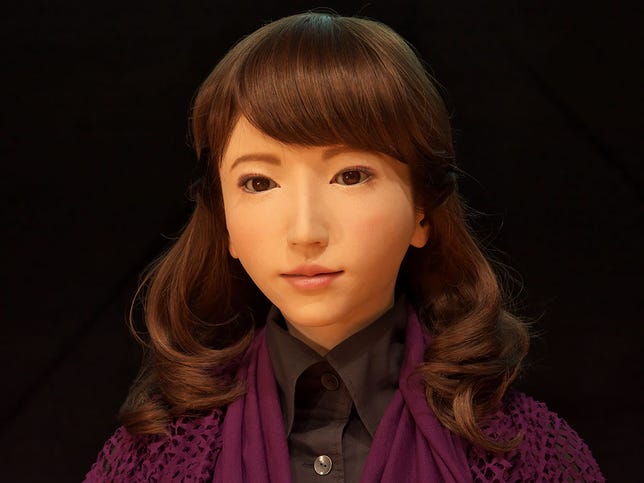Scientists Are Trying to Teach Robots How to Laugh
Anyone who’s laughed with a friend knows how deeply bonding humor can be, so it stands to reason that our future robotic companions will stand a better chance of earning our trust and affection if they can laugh with us. But only because a Robot tells jokes does not mean that it can adequately respond to it. Did a comment warrant a polite robotic giggle or an all-out bot belly laugh? The right reaction could mean the difference between an approachable android and a metal brute.
That’s why Japanese researchers are trying to teach humorless robot nerds to laugh at the right time and in the right way. It turns out that teaching an AI to laugh isn’t as easy as teaching it to respond to a desperate request from the phone tree to unsubscribe. “Systems that try to mimic everyday conversations still struggle with the idea of when to laugh,” according to a study published Thursday in the journal Frontiers in Robotics and AI.

Erica, the humanoid robot, gets a sense of humor in the lab.
Osaka University, ATR
The study details the team’s research to develop an AI conversational system that focuses on shared laughter to make chatter between humans and robots more natural. They envision it being integrated into existing conversational software for robots and agents that are already learning recognize emotions and Dealing with open complexity like vague human commands.
“We believe that empathy is one of the most important functions of conversational AI,” said Koji Inoue, an assistant professor of computer science at Japan’s Kyoto University and a co-author of the study, in a statement. “Conversation is, of course, multimodal and not just about answering correctly. So we decided that one way a robot could empathize with users is by sharing their laughter.”
The key is that the system not only recognizes laughter, but also decides whether to laugh in response and then selects the right type of laugh for the occasion. “The most important result of this paper is that we have shown how we can combine all three tasks in one robot,” said Inoue. “We believe that this type of combined system is necessary for appropriate laughter behavior and not just detecting and responding to a laugh.”
To collect training data on the frequency and type of shared laughter, the team used Erica, an advanced humanoid robot designed by Japanese scientists Hiroshi Ishiguro and Kohei Ogawa, as a platform to study human-robot interaction. Erica can understand natural language, has a synthesized human voice, and can blink and move her eyes when listening to people talk about their problems.
The researchers recorded dialogue between male Kyoto University students taking turns talking face-to-face with Erica, while amateur actresses in another room remotely controlled the bot via a microphone. The scientists chose this setup knowing that there would of course be differences between the way humans talk to each other and how they talk to robots, even those controlled by another human.
“We wanted to train the laughter model under conditions similar to real human-robot interaction as much as possible,” Kyoto University researcher Divesh Lala, another study co-author, told me.
On the left, a human speaks to the robot Erica, which is controlled by an actress from a separate room.
University of Kyoto
Based on the interactions, the researchers created four short audio dialogues between humans and Erica, who was programmed to respond to conversations with varying degrees of laughter, ranging from no chuckles at all to frequent giggles in response to her human interlocutors. The volunteers then rated these interludes for empathy, naturalness, human likeness, and understanding. The laugh-together scenarios performed better than those in which Erica never laughs or laughs every time she detects a human laugh without using the other two subsystems to filter context and response.
The Kyoto University researchers have already programmed their shared laughter system into robots other than Erica, though they say the humanoid howl might sound even more natural. Even if robots are becoming more and more lifelike, sometimes unsettlingRoboticists acknowledge that providing them with their own distinctive human-like characteristics that go beyond programming poses challenges.
“It may well be more than 10 to 20 years before we can finally chat with a robot as casually as we would with a friend,” said Inoue
Of course, Erica isn’t ready for the stand-up circuit. But it’s fascinating to think that there could soon come a day when it really feels like she gets your jokes.